Introduction
As China’s growing global role and increasingly hardline policies at home and abroad gain attention, the United States and other Western governments are also taking notice of China’s expanding influence in developing countries. The implications of China’s growing investments linked to the Belt and Road Initiative (BRI), its ambitious global infrastructure and connectivity program, are increasingly debated. So, too, are the nature of Chinese Communist Party (CCP) efforts to popularize its authoritarian model and undermine developing democracies around the world, whether intentionally or indirectly.1 In November, Vice President Pence noted that the administration, through its Indo-Pacific strategy, intends to bolster the rule of law and human rights in regional countries facing growing influence from China.
Such attention is welcome, and it has spurred numerous analyses on the drivers of China’s growing influence efforts, with most focused on external factors in Beijing’s calculus. China seeks influence due to many geostrategic considerations, such as the protection of sea lanes critical for the transport of energy and the establishment of military facilities to protect China’s growing global interests. However, much of the foundation for China’s growing influence in developing countries is found inside China, where the CCP faces a mounting set of challenges to its rule that dominate its attention. As Washington considers how best to address China’s push for influence across the developing world, it is critical to have a clear understanding of the domestic imperatives at play.
Studies addressing internal drivers of China’s growing influence abroad have centered on the implications of President Xi Jinping’s consolidation of power since late 2012. Indeed, as others note in this series, it is tempting to ascribe the aggressive turn in Chinese foreign policy entirely to Xi, who has brought China closer to one-man rule than it has been in decades. Xi has centralized power across all policy domains, including foreign affairs.2 Xi has used this power at the apex of foreign policymaking to accelerate China’s push for influence in the developing world.
Xi’s centralization of power, however, has been more an accelerant than the main driver of China’s more assertive influence efforts. It is, rather, the Party’s obsession with preserving its rule—a theme which both predated and facilitated Xi’s elevation to power in 2012—that more fundamentally drives China’s growing influence in developing countries. Mounting threats to CCP control have occupied Chinese leaders since early this century as they have come to terms with the unraveling of the core factors that characterized China’s reform era—relative political stability, ideological openness, and rapid economic growth. As Carl Minzner puts it, the leadership is consumed by the need to strengthen “the levees they rely on to keep the waters of a turbulent society in check.”3
Protecting the Party
While the Party’s primary focus remains on domestic issues such as corruption deemed central to its legitimacy, Chinese leaders have sharpened their focus on those aspects of developing country relationships deemed likely to bolster the Party’s fortunes amid this turbulence.4 Two significant areas in which the CCP has stepped up influence efforts to benefit Party control are the economic and information domains.5
First, Beijing wants to mitigate mounting economic challenges and slowing growth in China through overseas investment and the creation of markets abroad for Chinese goods and materials. The Party’s legitimacy depends on the health of China’s economy.6 Access to resources needed to feed China’s growing economy has long driven its engagement with the developing world, but China’s economy is now struggling. Chinese leaders are therefore looking to further boost overseas investment and trade, which have been growing for years but have been partially rebranded under the BRI. As part of its broader economic development strategy, Beijing is using BRI to export massive quantities of steel and aluminum, find new markets for Chinese products, and help keep indebted state-owned enterprises (SOEs) afloat.7 BRI projects, many of which are implemented through provincial governments eager to capitalize, facilitate the expansion of Chinese companies’ international footprint.8 These efforts are viewed as critical to propping up growth and employment as China endures an uncertain transition from a manufacturing focus to services and consumption, including potential reforms likely to result in layoffs.9
BRI-linked economic initiatives, and China’s narrative and diplomatic push tied to the promise of BRI infrastructure funding, translate into significant Chinese influence in developing countries.10 Some of this influence is a natural result of a $13 trillion economy showering promises of investment on developing countries desperate for infrastructure. The opacity and the nature of Chinese investment practices, however, have resulted in significant negative effects on countries’ economies and political institutions. For example, some developing countries, such as Sri Lanka, have assumed unsustainable debt burdens as a result of Chinese infrastructure financing deals, ultimately resulting in a loss of sovereignty over strategic assets.11 While China’s approach in most developing countries is less aggressive, it is still frequently corrosive of democratic institutions, increasing corruption and undermining financial and political independence.12 China, in part to defend its economic interests, also interferes in the political systems of developing countries around the world, tipping the scales towards China-friendly politicians and policies.13
China, in part to defend its economic interests, also interferes in the political systems of developing countries around the world, tipping the scales towards China-friendly politicians and policies.
A second way the CCP tries to bolster its legitimacy through influencing the developing world is by manipulating the information space to China’s advantage, a practice now commonly termed “sharp power.” Beijing wants to protect its growing investments, ensure Party control over ideology and information that might enter China, and legitimize China’s authoritarian development model abroad.14 Presenting a positive “China story,” as Xi has put it, helps to smooth the path for investments that benefit China’s economy. The CCP recognizes that a more positive perception of China heads off criticism of Chinese investments and corruption of a country’s elites, thereby preventing Chinese influence from becoming a political issue as it has in Zambia, Sri Lanka, and Malaysia.15 Through media cooperation agreements with BRI countries, Beijing advances information sharing intended to influence foreign journalists covering the BRI, including through conferences sponsored by the state-affiliated All-China Journalists Association.
As the Party has driven Chinese society toward more state-sponsored ideological conformity to create a lasting basis for authoritarian Party rule, it also desires greater ideological control abroad.16 Despite increased efforts to limit “infiltration” of outside values and ideas, Chinese have growing access to Western news, content, and culture.17 The CCP judges that, as China continues to “open up” to reap the benefits of playing a more central role in the global economy, it will need to “sanitize” the external information environment to ensure that such opening does not invite ideological challenges to Party control. Among developing countries, China is most concerned about its “periphery,” where it fears ideological contagion from democratization and “color revolution” might cross into China. Deng Xiaoping, commenting on allowing dangerous foreign influences to circulate in China as it opened to the world, once remarked, “If you open the window for fresh air, you have to expect some flies to blow in.” The CCP is now looking to kill as many flies as possible inside developing countries as it deepens engagement with them.
Lastly, the CCP shapes information in developing countries as part of an effort to legitimize the Party and China’s authoritarian system on the global stage. China’s promised rise and rejuvenation as a great power, a key pillar of the Party’s legitimacy, requires expanding its normative power abroad. Chinese leaders recognize that to achieve legitimacy as a responsible great power without democratizing—a prospect not welcomed by the developed West—they must first popularize China’s model in the developing world.18 These efforts also support China’s economic goals. Gaining widespread support for its model has become more important as China depends more on a favorable climate for Chinese investments. The CCP conducts large-scale trainings of foreign officials about its development methods and provides increasingly sophisticated technology to authoritarian governments.19 China frequently reprints in domestic official media the “positive China stories” told in foreign media, using reflections of China’s rejuvenation and responsible global role to stoke patriotic sentiment to CCP benefit.20
Chinese leaders recognize that to achieve legitimacy as a responsible great power without democratizing—a prospect not welcomed by the developed West—they must first popularize China’s model in the developing world
The CCP has a large and growing set of tools it uses to advance its narrative in developing countries and to quiet critics, including pervasive but overt official propaganda and media outlets, covert efforts to cultivate thought leaders, and more aggressive use of the Party’s United Front Work Department (UFWD) to squelch anti-China narratives by “enemy forces” abroad perceived to threaten Party control at home.21 As at home, enhanced Party control over all aspects of its foreign engagement has accelerated under Xi, propelling influence efforts in developing countries.22 Greater CCP coordination of propaganda and information manipulation efforts abroad, combined with the granting of increased power and bureaucratic sway to the UFWD, have streamlined overlapping functions, enhancing their effectiveness.23 Party committees have been strengthened within both SOEs and private Chinese firms operating abroad, and Party discipline inspectors are now embedded in every government organ.24
Bigger than Xi
China’s push for greater influence in the developing world, therefore, is a product not only of geopolitical opportunism or aggressive policies under a more powerful Xi, but also of a more fundamental external manifestation of China’s more hardline authoritarianism at home, deemed necessary for the Party’s continued survival. Much like its approach to industrial policies deemed essential to China’s economic future, China’s tactics in the developing world are inherent to the Party’s methods to achieve China’s “rejuvenation” and ensure regime control. In other words, the problem is more dire than if it was solely a result of one man’s pursuit of unbridled power. The CCP is unlikely to be deterred from pursuing economic advantages and manipulation of information through strong criticism or appeals to universal values.25
China’s tactics in the developing world are inherent to the Party’s methods to achieve China’s “rejuvenation” and ensure regime control.
Furthermore, there is a good chance that Chinese leaders will become even more focused on preserving Party rule in the face of mounting challenges at home, even as China grows more powerful abroad. China’s approach to developing countries in this scenario will increasingly reflect the short-term demands of Party control rather than considerations of China’s long-term interests in a country. This would result in China seeking quick returns on investments abroad and more heavy-handed propaganda and “sharp power” efforts to shape the narrative to protect China’s interests. Chinese leaders facing growing domestic problems would be more vigilant against the “infiltration” of foreign ideology and more reliant on populist nationalism to survive, enhancing the value of information manipulation abroad.26
If U.S.-China ties continue to decline, Beijing will likely compensate for damage to China’s economy and look to convince the public in China that it is taking a strong role globally in the face of U.S. pressure. Chinese fears of a protracted economic struggle will propel greater focus on gaining lopsided benefits from investment in developing countries. China will increasingly cast itself as the upholder of globalization and global growth, in contrast to the Trump administration, but may also take a directly anti-U.S. approach to its information-shaping efforts as the bilateral relationship declines. The CCP is likely to redouble advocacy for China’s authoritarian development path. Longer term, Chinese leaders may respond to a bifurcating global economy and technological landscape by more proactively institutionalizing developing countries’ economic relationships with China, ensuring that if they must choose, they pick Beijing.
Focus on the targets
China’s building of influence throughout the developing world has significant implications for U.S. interests, undermining the foundation of democracies and their relationships with the West. The challenge is only likely to grow given the probable array of tools potential authoritarians will have at their fingertips, often courtesy of China.27 Although China is not yet able to reshape the global economic order in its own image, the country’s growing economic leverage and role in setting the rules and norms are set to grow, especially if Western countries continue to withdraw.
The Party’s approach will not change unless it sees fewer benefits from its aggressive approach in developing countries. Chinese officials and companies take a harder line in countries where governance, transparency, and the rule of law are lacking. The United States and its partners therefore must invest resources in changing the context in the countries China targets for influence, building the resilience of their institutions and giving countries alternatives to Chinese investment.28 The United States should invest to bolster the capacity of civil society and independent media in developing countries, enabling them to closely monitor and evaluate Chinese project implementation practices and promoting the rule of law and transparency. Congress should heed the U.S.-China Economic and Security Review Commission’s recent suggestion to provide additional assistance for countries that are vulnerable to Chinese influence, which could help promote digital connectivity, infrastructure, and energy access. The West should also raise awareness of China’s influence efforts in think tanks, universities, NGOs, and media in many developing countries where impartial expertise on China and the nature of the CCP is lacking. Wherever possible, the United States should work with partners such as the EU, Japan, India, and Australia to offer infrastructure alternatives to developing countries.29
The CCP’s approach to influence in the developing world is driven by deep-seated and intensifying concern about regime survival. From the outset of Xi’s tenure, he declared an intent to forcefully restore Party control, prevent a Soviet-style collapse, and prepare for the next phase of “reform and opening up” and China’s rise to great power status. These enduring imperatives will ensure an aggressive Chinese approach to securing leverage over developing countries even after Xi has stepped down. To prevent the resulting spread of authoritarianism and defend its interests, the United States will need to recommit to the hard work of defending democracy around the world.
-
Footnotes
- China, of course, has engaged the developing world for decades, assuming ideological leadership over insurgents and more recently declaring itself a leader of developing country interests on the global stage. For an excellent overview see both Joshua Eisemann and Eric Heginbotham, eds., China Steps Out (New York: Routledge, 2018) and Joshua Eisemann, Eric Heginbotham and Derek Mitchell, eds., China and the Developing World (New York: Routledge, 2005).
- Carl Minzner, End of an Era (Oxford University Press, 2018), 29.
- In other words, the tighter control now exercised by Beijing is not another stage in the cycle of fang (relaxation) and shou (tightening) that has characterized China since the 1980s. See Richard Baum, Burying Mao (Princeton University Press, 1996).
- As with all Chinese policies, Beijing’s engagement with the developing world has always been ultimately about regime survival. Domestic considerations are more determinative of Beijing’s approach in most developing countries, particularly outside Asia, than the geostrategic considerations which apply in select countries such as Sri Lanka or Djibouti. See Joshua Eisenmann and Eric Heginbotham, eds., China Steps Out (New York: Routledge, 2018), 225.
- China of course continues and, in some cases, has increased efforts to ensure countries toe the line on sensitive political issues such as the “one China” principle regarding Taiwan and Tibet and support China’s approach to issues at the U.N. and other multilateral forums. The point here is that the economic and information domains are the two areas in which Beijing has most notably—and to greatest effect—increased influence efforts to bolster the Party’s position.
- Richard McGregor, in his still relevant 2010 book The Party, labeled this as the most important pillar supporting the Party at home and China’s growing power abroad. Richard McGregor, The Party (New York: Harper Collins, 2010), 269.
- As Nadege Rolland explains, Beijing also views the BRI as key to its geostrategic goals in Asia, particularly preventing terrorist threats, ensuring energy resources, and increasing its regional influence, particularly relative to the United States. China’s drive to ensure the free flow of goods to and from China’s market has also resulted in a massive increase in Chinese investments in ports around the world, with Chinese SOEs now running at least 76 ports and terminals out of 34 countries. BRI has also given China an opportunity to advance its military objectives. In Greece, Pakistan, and Sri Lanka, Chinese investment in ports has been followed by high-profile visits from Chinese naval vessels. See Nadege Rolland, “China’s Eurasian Century? Political and Strategic Implications of the Belt and Road Initiative,” National Bureau of Asian Research, May 2017, https://www.nbr.org/wp-content/uploads/pdfs/programs/chinas_eurasian_century_ch3.pdf; and Elizabeth Economy, “China’s New Revolution”, Foreign Affairs, May/June 2018, https://www.foreignaffairs.com/articles/china/2018-04-17/chinas-new-revolution.
- Eager to capitalize on trade and investment opportunities and central government funding tied to BRI, all of the country’s 31 provincial-level regions have also issued work plans on BRI. This support helps to make Chinese companies globally competitive, particularly in the higher-value-added industries Beijing seeks to foster. Chinese companies also seek to define and export standards for a broad set of technological applications, including through the so-called Digital Silk Road, which aims to channel investment to create new markets for Chinese tech companies, enable Chinese companies to lead those sectors, and promote Chinese technical standards. See https://www.uscc.gov/sites/default/files/Annual_Report/Chapters/Chapter%203%20Section%201-%20Belt%20and%20Road%20Initative_0.pdf.
- Recent indicators confirm a broad-based decline in economic activity likely to encourage these trends. China’s economy grew at its weakest pace since the global financial crisis in the third quarter, as manufacturing output and infrastructure investment slowed. A Politburo session in late October confirmed that the economy is not doing well, with downward economic pressure accumulating and hidden risks to the economy coming to light.
- This is despite the slow-moving nature of many projects undertaken by Chinese SOEs and the fact that most headline-grabbing commitments by China have yet to translate into funds spent on the ground.
- While China’s approach to Sri Lanka demonstrates its willingness to add to a country’s debt burden and use the resulting leverage to secure strategic aims, the evidence does not suggest this is China’s typical approach. China’s goal in most countries is, first and foremost, to achieve maximum economic benefit for China; continuing to offer loans to insolvent countries would not generally serve this purpose.
- Chinese SOEs, directed to achieve healthy returns from their investment decisions, take advantage of opaque deals in countries with often weak regulations and where officials are not primarily concerned about their country’s long-term interests. Many leaders, particularly those of the more illiberal variety, agree to lopsided terms for projects of questionable long-term viability to bolster their short-term political fortunes. SOE’ efforts to secure tenders and favorable terms out of BRI financing create new opportunities for corruption in many countries. When paired with China’s uniquely massive offers of investment, such graft can lead to the co-opting of political and economic elites, insulating governments from public accountability. Large-scale corruption at the leadership level has been documented in select cases. The most oft-cited case is Sri Lanka, where then-Prime Minister Mahinda Rajapaksa’s 2015 reelection campaign received large sums from the Chinese company constructing a port (of suspect economic utility) as Rajapaksa agreed to increasingly onerous Chinese financing terms to complete construction. Ultimately a new Sri Lankan government, agreed to a debt-for-equity swap granting China a 99-year lease for the port, granting China control of very strategic territory along a critical waterway in the Indian Ocean. See also https://www.uscc.gov/sites/default/files/Annual_Report/Chapters/Chapter%203%20Section%201-%20Belt%20and%20Road%20Initative_0.pdf.
- China achieves significant political influence through its economic leverage, prompting some beneficiaries to tamp down criticism about human rights in China or support China on the South China Sea in multilateral forums. Countries that support China’s interests, or at a minimum do not challenge it on sensitive issues, receive benefits; conversely, countries that oppose China are denied access to these rewards and might even be punished.
- Anne-Marie Brady’s work on China’s foreign political influence activities, including through manipulation of the narrative, now forms the foundation for those researching the issue.
- Beijing hopes to avoid the rise of political challengers in developing countries who run on anti-China platforms and to moderate the policies of such candidates who win office. Chinese information efforts have factored into election campaigns in numerous developing countries across continents, including in Zambia, Peru, Sri Lanka, and Nepal.
- Carl Minzner, End of an Era (Oxford University Press, 2018), 140.
- Chinese authorities have stepped up efforts to limit foreign influence in the cultural, entertainment, and educational spheres inside China, tightening already significantly strengthened restrictions on access for foreign media in China to create a wall of regulations against the “infiltration” of outside values and ideas that could threaten the Party’s preferred narrative. This includes slashing imports of children’s cartoon books like Peppa Pig and limiting the percentage of foreign shows permitted on air. In schools, the role of English in the national college-entrance test has been reduced. See http://www.sapprft.gov.cn/sapprft/contents/6588/385231.shtml and Elizabeth Economy, “China’s New Revolution, Foreign Affairs, May/June 2018, https://www.foreignaffairs.com/articles/china/2018-04-17/chinas-new-revolution.
- At the 19th Party Congress in October 2017, Xi left no doubt that he regards China’s illiberal concepts of political and economic order as superior to so-called Western models, and that he seeks to popularize “Chinese wisdoms” to the world as a “contribution to mankind.”
- This relates to the more fundamental question of whether and how China is now exporting authoritarianism to achieve acceptance of the CCP’s model of governance, which I do not have the space to address here. (See https://www.spf.org/jpus-j/img/investigation/The_Authoritarian_Challenge.pdf and https://www.bloomberg.com/opinion/articles/2018-06-11/china-s-master-plan-exporting-an-ideology.) It is clear, however, that China has become more brazen in providing like-minded governments with technology and training that enable them to control their own citizens through censorship and surveillance. See https://freedomhouse.org/report/freedom-net/freedom-net-2018/rise-digital-authoritarianism#fotn18-section-china-remakes-the-world-in-its-techno-dystopian-image.
- Chinese companies are also investing in foreign media and cultural institutions, strategic acquisitions which, at the very least, encourage self-censorship of stories and narratives critical of China.
- The UFWD describes itself as conducting propaganda work against “enemy forces” at home and abroad, and the boundary between its external and domestic work is hazy at best. See http://zytzb.gov.cn. The CCP deploys propaganda, uses “sharp power,” and exploits overseas Chinese to manipulate information environments, utilizing such tools to varying degree depending on the context. Xi made it clear early on that he sought a new level of aggressiveness in foreign propaganda efforts, stating in a 2013 speech that China should spread China’s perspective in “emerging and developing states.” China inserts its perspective into foreign media outlets, including by offering free content to partner media organizations. The CCP also uses more opaque tactics, spending tens of billions of dollars cultivating elites, media, and other thought leaders in developing countries to influence narratives about China—particularly regarding BRI—and to quiet criticism. China, for example, pays journalists to come to China, where they receive unique access to Chinese government officials and ministries. Foreign journalists are then encouraged to publish positive stories on China in their local media, with a focus on cooperation with their country and the benefits of BRI. China isn’t unique in offering media fellowships, but the opacity of the effort and its ambitious scope and scale set it apart. Most of the outlets do not disclose the Chinese government’s support for their journalists. The CCP also compels Chinese students and businesses abroad to act as political agents, using diaspora voices and political influence as tools to serve Party interests, including as facilitators of BRI projects across the developing world. The CCP has long regarded diaspora Chinese as an important community that can contribute capital and technology to China’s development but increasingly views overseas Chinese as key to China’s strategic ambitions. China’s efforts, including leveraging threats against families in China to target ethnic Chinese critics abroad, help give the appearance of unified ethnic Chinese support for Beijing’s actions in a country when no such unity exists, making it harder for dissenting voices to be heard.
- As the revised Party constitution now puts it, “Government, military, society and schools, north, south, east, and west—the Party is leader of all.” The Party’s external efforts to shape information about China reflect a broader internal effort by the authorities to enhance Party regulation over all aspects of political, social, and cultural life. Last March, the Party moved to solidify and formalize its control over the country’s media, consolidating broadcasters under the management of the Party’s Central Propaganda Department. Whereas before such control was exercised partly through government organs, the Party itself will now have direct control over the regulation of film, radio, television, book publishing, Internet, and news media.
- Chinese leaders have long lauded United Front work as key to the Party’s goals, but the organization has seen its status, power, and scope of work upgraded under Xi. He has designated UFWD as a movement for the “whole party,” leading to an increase in the number of UFWD assignees to posts at the top levels of party and state, as well as in Chinese embassies abroad. Earlier this year, it was announced that the UFWD would take over the duties of government agencies responsible for ethnic and religious affairs, as well as engagement with overseas Chinese.
- In late October, the Party released a new document meant to enhance the work of discipline inspectors embedded in organizations, including SOEs operating at home and abroad.
- Although it remains to be seen how successful BRI will be, Xi’s signature initiative is here to stay. In May 2017, a senior official at the National Development and Reform Commission, China’s top economic planning body, said China would spend a further $600–800 billion over the next five years on outbound investment, and that “a fairly large proportion … will go into markets related to the Belt and Road Initiative.” In October 2017, BRI was written into the Communist Party’s constitution.
- As Minzner puts it, Xi’s “image-building has begun to give off a whiff of a personality cult, with aromatic notes steadily strengthening over time.” (See Carl Minzner, End of an Era (Oxford University Press, 2018), 30.) If this trend continues, channels of consultation and bottom-up information sharing are likely to further atrophy, with the effect of less predictable foreign policy decisions. China’s external approach in such a scenario will increasingly be defined by Xi’s association and resulting political concerns rather than by the State Council technocracy. Historically, the concentration of power outside law-based institutional frameworks leads not to efficient centralized policies but to poor governance.
- Innovations in facial and even gait recognition technology coming out of China, for example, indicate the challenge to democracy that will be posed by surveillance capabilities. China is looking to become a global leader in AI by providing the technology to developing countries. A National People’s Congress Standing Committee session in late October discussed the need for China to dominate AI through, in line with BRI, providing it to developing countries.
- Such U.S. efforts can build on budding pushback to China’s economic approach. China, responding at least rhetorically to concern in countries such as Malaysia, Myanmar, and Pakistan about the wisdom of deals concluded with Beijing, already appears to be tapping the brakes on some BRI projects. However, there is no sign that China has plans to fundamentally change course rather than tweak its mechanisms for choosing and implementing BRI projects. See also https://www.uscc.gov/sites/default/files/Annual_Report/Chapters/Chapter%203%20Section%201-%20Belt%20and%20Road%20Initative_0.pdf.
- Japan, for example, seeks to expand “high quality and sustainable” infrastructure alternatives for developing countries through its own Partnership for Quality Infrastructure, and the United States’ OPIC is already working with Japan’s Bank for International Cooperation. Cooperation with Europe to offer BRI alternatives is looking increasingly promising with the EU’s release this September of a plan for connectivity between Europe and Asia, which follows a nearly unanimous internal EU report from April critical of BRI. See “China and Japan Reset Strained Relationship,” The Financial Times, October 26, 2018, https://www.ft.com/content/160b3666-d8e3-11e8-a854-33d6f82e62f8?mc_cid=08744054f9&mc_eid=86e1c4303b.
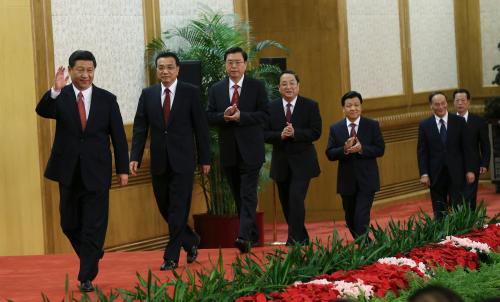
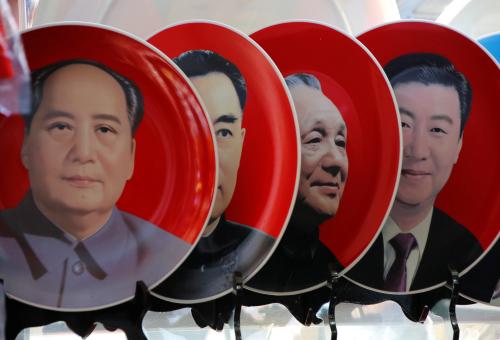
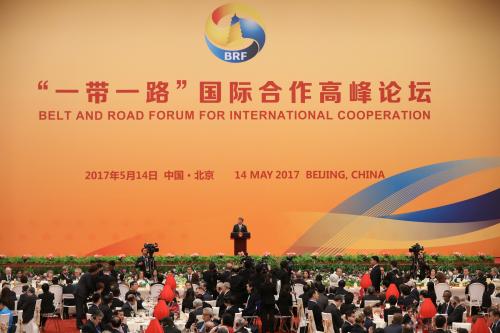
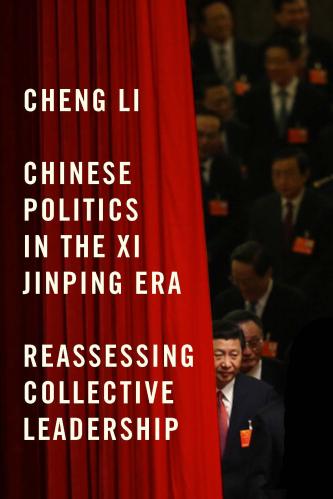
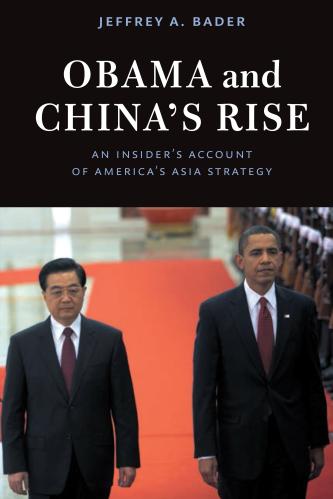
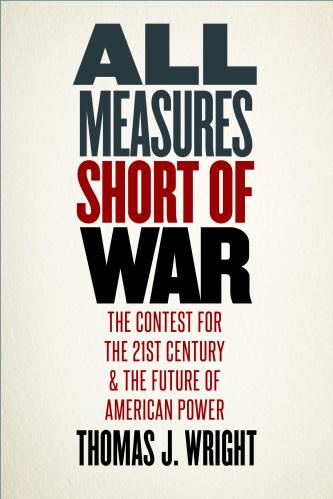

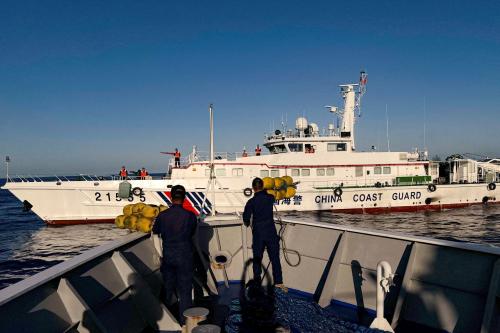

Commentary
Protect the Party: China’s growing influence in the developing world
January 22, 2019